Spring and summer rain showers and thunderstorms are often a welcome reprieve from the scorching temperatures. In addition to cooling us off, these rain storms also keep our lawns and gardens green and our rivers and lakes full and ready for summer fun.
Unfortunately, heavy rain can also lead to a leaky chimney. Chimney leaks are one of the most common chimney problems we see during the summertime. Even chimneys without previous problems can develop leaks – and their accompanying water damage – in as little as one season.
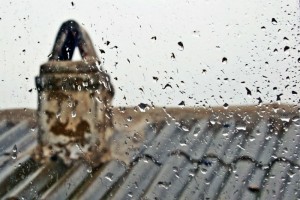
What causes chimney leaks?
Although chimneys look like simple brick or stone columns, they are actually complex structures with a number of different pieces and parts. Because the chimney is constantly exposed to the elements, its masonry is at greater risk for damage and breakdown.
The following are some of the most common causes of chimney leaks.
Chimney cap: The chimney cap protects the top of your flue from water entry, as well as animals and debris. Without a properly fitted chimney cap, the flue and fireplace are left completely exposed to water entry from rain.
Flashing: Flashing is the water tight strips that seal the seam between your roof and the chimney structure. If flashing is incorrectly installed, damaged, or merely loses its seal due to wear and tear or age, water can easily seep through any gaps. This can cause water damage to not only the roof and chimney, but also the ceilings and walls around the chimney.
Masonry damage: If one side or part of your chimney is often directly exposed to rainfall or other sources of water, the masonry may deteriorate or become damaged faster than the rest of the chimney. Water can cause bricks to crack and spall; in addition to making your chimney look aged or unkempt, it can also affect the structural stability of the chimney and lead to chimney leaks.
Symptoms of a leaky chimney
Many homeowners falsely assume that all leaky chimneys present themselves as visible water in the fireplace or flue. However, because of the size and complexity of most chimney systems, chimney leaks are often not recognized until they’ve already caused significant damage.
Below are some of the signs that may indicate your chimney is leaking.
- Water or condensation inside the firebox
- Sound of dripping water in the chimney
- Moisture, leaks, or water staining on walls or ceilings around chimney
- Musty or dank odors, especially after it rains
- Cracked or spalled interior or exterior masonry
Preventing chimney leaks
The best way to prevent chimney leaks is by having regular preventative maintenance done on your fireplace and chimney. Annual chimney sweepings and inspections can often identify any new chimney or masonry damage, allowing you to have it repaired before it leads to a chimney leak.
Another option for preventing leaks and water damage to your chimney is to have your masonry waterproofed. The waterproofing process involves the application of a specially designed sealant that keeps water out while allowing the masonry to retain its semi porous nature. These products can even be applied to chimneys with existing water damage as a way to keep it from getting worse.
If a summer rainstorm has left you with a leaky chimney, contact Lord’s Chimney today. Our expert staff can identify and resolve the source of your leaky chimney!
Gas fireplaces make a beautiful addition to any home and are an increasingly sought after feature for homebuyers. Valued for their beauty, functionality, and ease of use, more and more homeowners are converting their existing open hearth fireplaces to gas. However, what many may not realize is that their new gas fireplace is missing a required component – the damper stop.
Although many homeowners may not know what a damper stop is, they are a necessary part of a gas fireplace. Unfortunately, many homes with gas fireplaces – especially those that were not professionally installed – may be missing this important piece.
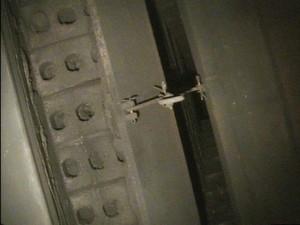
What is a damper stop?
A damper stop is a piece of metal designed to ensure that the flue of a gas fireplace always remains partially open. With a traditional hearth fireplace, the damper is opened or closed when the fireplace is in use.
While gas fireplaces also need the flue to be open while in use, there is often no mechanism to close it; instead, the damper is simply left partially or fully open when the gas insert is installed. However, leaving the damper open at installation does not ensure that the damper will stay open forever. Strong winds, house settling, or other damage to the flue or damper can cause the damper to close.
Because of this, damper stops were designed to be installed as a way to keep the damper permanently open. Although they are required, some homes with gas fireplaces – especially those that were self-installed by previous homeowners or untrained installers – may not have them.
Dangers of a missing damper stop
A damper stop may seem like an insignificant piece of the gas fireplace. However, it is a specially designed safety precaution that can help protect your family, namely against carbon monoxide poisoning.
Carbon monoxide is an odorless, tasteless, colorless gas that is often called the “silent killer” because it is so difficult to detect. When the damper is open, carbon monoxide is able to safely travel up the chimney and out of your home. However, if the damper is closed this deadly gas can back up into your room, affecting the health and safety of you, your family, and your friends.
How to identify a damper stop
With a traditional hearth fireplace, it is easy to tell if the damper is open or closed; if smoke back flows into a room when the fireplace is in use, the damper is closed. Gas fireplaces, however, do not produce smoke, making it much more difficult to tell if the damper is open or closed.
Missing damper stops are most frequently identified during home inspections; however, they can be easily missed, leading homeowners to believe that there is nothing wrong with their gas insert or fireplace.
To make sure that your gas fireplace has a damper stop that is correctly installed, contact Lord’s Chimney to schedule a chimney inspection. Our trained chimney sweeps will be able to inspect your chimney and fireplace to determine whether or not your gas fireplace has a damper stop; if it is missing, one can be installed. To make sure your chimney is up to current safety standards, contact us today!
As a homeowner, there are lots of things around your home, both inside and outside, that need to be regularly maintained. And let’s face it – it’s easy to get so overloaded with household to-do lists that sometimes some of the most important places get overlooked.
We’ve noticed that fireplaces and chimneys tend to get thrown into this overlooked category since they are only used for a portion of the year. Sound all too familiar? Well, don’t burn yourself out figuring out how you’ll fit in yet another job. Simply give our experts a call to handle it all!
Chimney Inspections & Sweepings
Annual chimney inspections are essential when it comes to keeping your system standing strong for the long haul. All kinds of hidden dangers could be lurking and putting your home at risk, and it takes the trained eyes of a pro to spot and resolve them. Oftentimes, what homeowners think of as no big deal (even something as seemingly minor as a broken tile or brick) are actually quite dangerous.
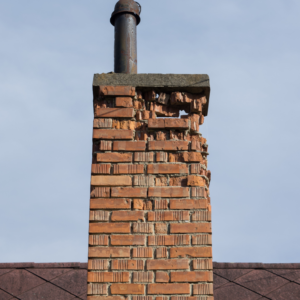 When it comes to chimneys, the sooner any issues are spotted and addressed, the better. If there is a crack, it will only continue to grow. If mold shows up, it will only spread. If things aren’t heating correctly, this will only continue, costing you more to operate the appliance and putting your home at risk.
When it comes to chimneys, the sooner any issues are spotted and addressed, the better. If there is a crack, it will only continue to grow. If mold shows up, it will only spread. If things aren’t heating correctly, this will only continue, costing you more to operate the appliance and putting your home at risk.
That’s why we urge all of our customers to book inspections at least once per year and always before kicking off your burning season. During these, our sweeps will look for any flaws, build-up, and imperfections, and then suggest any further maintenance, like sweepings or repairs, as necessary.
And what’s the importance of a chimney sweeping? To start, they remove any build up, excess debris, and creosote, which is the main cause of chimney fires. And apart from being fire hazards, blockages can lead to smoke in your home, carbon monoxide poisoning, and a lack of efficiency.
Repair & Restoration Services
Now, chimney sweepings and inspections are an important part of chimney maintenance, but they’re still just only one part of the equation. That’s why we offer a wide range of chimney, masonry, and venting services and repairs, all of which allow us to better serve our customers and meet all of their chimney and fireplace needs.
If your fireplace or chimney is worn down after years of use, we can help restore it to its former glory. Our fireplace restoration services can fix every part of your chimney, from the chimney cap at the top to the firebox at the bottom. Some of our many services include tuckpointing, leaky chimney repairs, chimney pressure washing, relining services, wildlife removal, troubleshooting, and even replacements or facelifts.
Not sure where you stand or what you need? Give us a call! We’d be happy to answer your questions and get you where you need to be.
Need Dryer Vent Services?
In addition to our chimney services, we can also clean dryer vents, as well as assist with installation and re-routing. Even if you regularly clean your lint trap, lint will still accumulate in your dryer vents and hoses over time, which can then create clogs and fire hazards. In fact, dryer-related issues cause thousands of house fires every single year. This one service well worth investing in.
Clean dryer vents can also help your dryer run more efficiently, wasting less energy and resulting in dryer clothes after each load. This saves you money month to month, and keeps your dryer and clothes from experiencing excess wear, too.
We’re Trusted Throughout Houston
At Lord’s Chimney, we have been proudly providing the greater Houston area with chimney, fireplace, masonry, and vent services for years. If you’re experiencing chimney issues, there’s no better crew to trust!
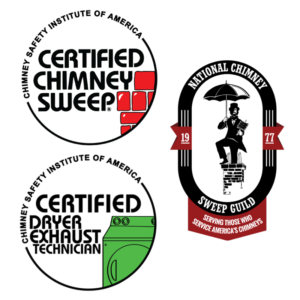 Why do so many turn to us time and time again? Well, for one thing, we make education a priority. We’re certified with the Chimney Safety Institute of America (CSIA), members of the National Chimney Sweep Guild (NCSG), and maintain a long list of certifications, associations, awards, and 5-star reviews. One look at our credentials and it’s clear – we take what we do seriously!
Why do so many turn to us time and time again? Well, for one thing, we make education a priority. We’re certified with the Chimney Safety Institute of America (CSIA), members of the National Chimney Sweep Guild (NCSG), and maintain a long list of certifications, associations, awards, and 5-star reviews. One look at our credentials and it’s clear – we take what we do seriously!
In the end, when you hire a sweep for your chimney inspections, sweepings, and more, you deserve to work with someone you can trust. If your sweep is associated with reputable organizations, experienced, and has a strong relationship with the community it serves, these are all solid signs that they’ll have your back throughout it all. When you hire us, we’ll treat you and your fireplace with respect!
Keep Your Home Safer By Working With Us
A clean and well-maintained chimney and fireplace doesn’t just help with efficiency… it also ensures your home stays a safer place to live season after season. Stay out of harm’s way by reaching out to our highly trained and qualified staff today. When you work with Lords Chimney, you work with the best!
Direct vent gas fireplaces have grown in popularity in recent years. With more realistic looking flames, a multitude of style options, and incredible ease of use, gas fireplaces allow families to enjoy the ambiance and warmth of a fire without the hassle and work associated with wood.
While gas fireplaces are more convenient and easy to use, they still have safety risks associated with them. A primary concern with gas fireplaces – especially in families with young children or pets – is the risk of burns associated with the hot glass fronts of the fireplace units.
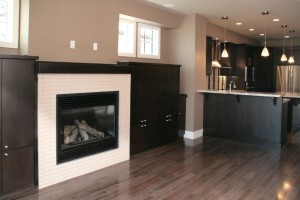
New fireplace safety standards
Beginning on January 1, 2015, all newly manufactured gas fireplaces and stoves with glass fronts will be required to include an installed protective barrier. This will apply to all appliances that have a glass surface temperature of 172 degrees or higher when in use.
“While gas fireplaces, stoves and inserts are a great asset to any home, the glass can become very hot during operation and stay hot long afterwards, creating a potential burn hazard,” said Hearth, Patio, and Barbeque Association president Jack Goldman. “In the past several years, there have been reports of burns involving young children and others who may not been aware of the potential risk of touching the hot glass on gas fireplaces, inserts and stoves. While we believe these incidents are few, even one is too many. We believe the new safety standard will provide greater protection to young children and others with special needs.”
This new standard was originally approved in 2012 by the American National Standards Institute. The U.S. Consumer Product Safety Commission worked with the fireplace and hearth industry to implement the standard in an effort to protect families from accidental burns. The standard will apply to all units manufactured after January 1, 2015. Retailers may continue to sell units manufactured before this date that do not meet the new safety standards.
Safety tips for families
If you have an existing gas appliance, there are a number of things you can do to protect yourself and your family from accidental burns. These common sense safety tips can help keep everyone in your home safe.
- Don’t leave children or pets unattended in front of a fireplace that is in use or has been turned off
- Teach children about fireplace safety and to never touch the glass of the fireplace
- Keep the remote control of the fireplace out of reach to prevent it from being accidentally turned on
- Install a switch lock to prevent children from turning on any gas appliances
Additional safety products
There are a number of safety products available to homeowners who already own gas appliances. Protective barriers or screens are the easiest and most common safety precaution. Safety screens come in a variety of styles and can be attached directly to the front of the fireplace or left as freestanding screens. Likewise, baby gates or barriers can be used to keep children and pets away from the fireplace when it is in use.
When installing aftermarket screens directly to the front of your hearth, please be aware that they may change the functionality of your fireplace. Check with a fireplace professional before installing something directly to the fireplace.
If you have questions about making your gas appliance safer, contact Lord’s Chimney today. Our expert staff is highly trained and ready to make sure you can enjoy your gas fireplace while keeping your family safe.
A roaring fire can be a welcome sight during the cold months of winter. To keep their fireplaces running properly, homeowners know to have their chimneys swept and inspected each year. However, few pay much attention to what they do with the byproducts of their wood burning fires – the ashes.
Regular ash disposal can improve the efficiency of your fireplace, and properly disposing of ashes can prevent accidental fires. Rather than seeing the measures needed to properly remove ashes as an inconvenience, homeowners should instead see it as taking steps to ensure their family’s safety.

How can ashes be dangerous?
While ashes themselves pose little to no threat to you or your family’s safety, it’s what they can keep hidden that are the real danger. Small coals and embers can lay dormant when surrounded by ash, only to ignite later on. According to forestry officials, “Wood ashes retain enough heat to ignite other combustible materials for several days.” Because of this, all ashes should be treated with caution, especially those from recently extinguished fires.
Improper ash removal methods
Unfortunately, many of the most common methods of ash removal are also the most unsafe. Ashes should never be mixed with garbage or trash; this even includes putting cold ashes into regular trash cans or dumpsters. Likewise, ashes should never be transported in cardboard boxes, paper bags, or other combustible containers. Lastly, vacuums should not be used to clean up ashes unless they have a HEPA filter. Without an appropriate filter to prevent dust particles from becoming airborne, even shop vacuums may leave carpets, walls, and other furnishings coated with a fine layer of dust.
Proper ash removal
The first and most important step in ash removal is ensuring that there are no remaining hot coals or embers in the ashes. This can often be achieved by letting a fire extinguish naturally overnight and stirring the ashes the next morning to ensure there are no remaining hot spots or pockets of heat. Ashes can then be transferred into a specially designed metal ash container that has a tight fitting lid. Ash containers should never be stored indoors, in garages or sheds, or near combustible materials in case there any remaining coals or embers.
Alternative uses of ashes
After using your wood burning fireplace all winter long, you may find yourself with a surplus of ashes. Luckily, there are several alternative ways that ashes can be used around the home. Two of the most popular uses for ashes are in the garden: as a fertilizer or as a bug repellant.
As a fertilizer, small amounts of ash can be used on garden plots or in compost piles. Ash “improves root health and strengthens the very cellular structure of plants, helping them resist all kinds of stresses,” says Julia Gaskin. Likewise, when sprinkled around the edges of a garden plot or flower bed ashes can serve as a natural repellent for slugs and snails.
Lastly, ashes can be sprinkled on icy driveways or sidewalks as an alternative to salt or gravel to prevent slipping. However, homeowners and their guests should take special care to wipe the soles of their shoes off after walking on an ashy path. If not, you may accidentally track dirty footprints throughout the house!
Properly removing and disposing of ashes can protect your family against accidental accidents or fires, and ashes can also have a surprising number of uses around the home. If you have questions about ash disposal or how to help your wood burning fireplace burn more efficiently, contact Lord’s Chimney today!

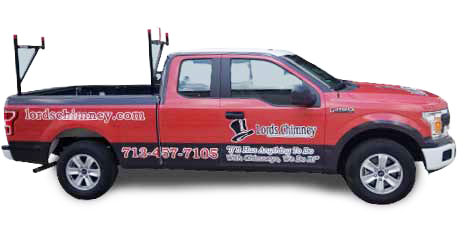


 When it comes to chimneys, the sooner any issues are spotted and addressed, the better. If there is a crack, it will only continue to grow. If mold shows up, it will only spread. If things aren’t heating correctly, this will only continue, costing you more to operate the appliance and putting your home at risk.
When it comes to chimneys, the sooner any issues are spotted and addressed, the better. If there is a crack, it will only continue to grow. If mold shows up, it will only spread. If things aren’t heating correctly, this will only continue, costing you more to operate the appliance and putting your home at risk. Why do so many turn to us time and time again? Well, for one thing, we make education a priority. We’re certified with the
Why do so many turn to us time and time again? Well, for one thing, we make education a priority. We’re certified with the 
